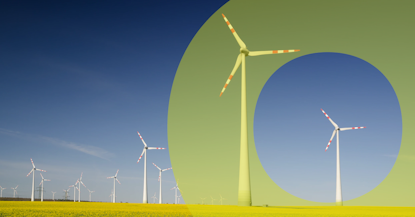How to tell green procurement from greenwashing

Imagine if governments tackled climate change with the same urgency as the coronavirus pandemic. When cities globally came to a halt in March, the extent of emissions became clear, literally, as air quality in many urban areas improved. I have little hope that this understanding might be sustained with the economy restarting. Climate change needs our collective attention. So if one thing we’ve learned from COVID-19 is that fast, collaborative action is critical – and possible.
The EU Green Deal sets out the ambition to achieve the economy in which there are no net emissions of greenhouse gases by 2050, economic growth is decoupled from resource use and no person or place is left behind. EU leaders think that procurement has a massive role to play. Rightly so – 250 thousand public bodies spend around 15% of the EU annual GDP through procurement. Used strategically, procurement can dictate trends in markets, especially those of foods, textiles, technology, estate, etc.
The Member States realized that in the early 2000s and started using green procurement strategically. Since then, green public procurement is the most institutionalized and ambitious strategic procurement area in the EU with, arguably, the highest uptake levels. Using procurement to achieve Green Deal targets sounds like a great idea. However, having spent a few days digging into the topic, I can’t help thinking that greenwashing culture will eat the green procurement strategy for breakfast.
The EU seems to provide a lot of solid advice to countries on buying green, through Green Procurement Guidelines that are full of good ideas on using procurement to make markets greener. It suggests focusing on procurements with the highest potential environmental impact, budgetary importance, and potential to influence the market. Importantly, countries should (but do not have to) set ambitious goals (of green procurement uptake) and track progress towards them. OECD claims that 69% of its members actually do that. For example, a country x should aim to achieve y% of total procurement (contracts and/or value) that uses green criteria. Ideally, over time countries would achieve the point where 100% of their procurement use green criteria. The Netherlands claims to have achieved that already.
But, for example, Latvia calls their procurement “green” when at least one green criterion is applied and it represents at least 5% of the total contract amount. If it means what I think it means, a hypothetical construction project that uses energy-efficient light bulbs that add up to 5% of the total contract value, would be called a green procurement contract. That, in theory, means that Latvia can achieve 100% of green procurement, by having only 5% of these procurement green in reality. This could look like greenwashing.
However, these are only dry statistics and they might be misleading. What seems to matter much more is better procurement planning that leads to more environmentally friendly impacts, and that is what we should measure (the Netherlands tried). So the basic idea is that, first of all, countries should try to buy genuinely green (monitoring the whole procurement cycle, from planning through through to contract implementation, not only the tendering process), then measure how much of their procurement is green, and then, most importantly, measure the environmental impact of that.
Is it possible at all? In theory, yes, but I was shocked to read the PWC study that tried to measure the uptake of strategic procurement in 2015 to basically come to a simple conclusion – we cannot measure it anywhere near exactly, because of no access to reliable and complete data (this challenge was also mentioned numerous times by the OECD). And yes, the study didn’t say that exactly (it rather used multiple methodological caveats and disclaimers), but I certainly took that our ability to measure the uptake of green procurement is not adequate to our ambition in the light of the Green Deal. We seem to be so far away from a situation of having standardized criterion mirrored in a user-friendly interface of e-procurement systems that would allow easy capturing of data, comparability, and finally, some level of representative measuring of the uptake of green procurement.
I understand that actually buying green is much more important than our ability to measure and analyze and that there are many more aspects to shifting to green economies. I can’t even imagine the types of new innovation and partnership methods or new procurement habits needed to make a meaningful shift (from stiff, risk-averse, compliance approaches to performance-driven smart green procurement). However, I can’t help the feeling that if we do not know exactly how countries perform, there is a lot of risk of greenwashing while our horizon is obscured by emission particles.
The Green Deal is clear: The Commission will propose further legislation and guidance on green public purchasing. We, together with the coalition of open contracting champions in the EU, seem to have an opportunity to help the Commission on this journey. I see two key gaps. First of all, a lack of vision of a procurement transformation that unlocks green innovations from markets. Secondly, our ability to measure because of a lack of full, comprehensive, standardized comparable data across the board and comparable methodologies that would allow measuring the environmental impact of green procurement and tracking progress towards the Green Deal objectives.
We certainly need a good piece of advice here. This week I spoke with the DG ENV Commissioner’s team and these topics are high on their agenda. Circular procurement is one of the more recent trends that provides specific opportunities. There are countless institutions working on the green agenda in the EU and I believe that we, as open contracting champions in the EU, have a very specific and valuable role to help them on their mission, which I will personally try to propel further.